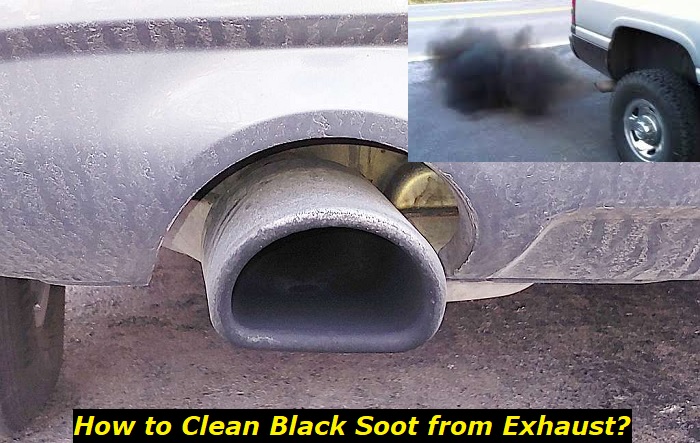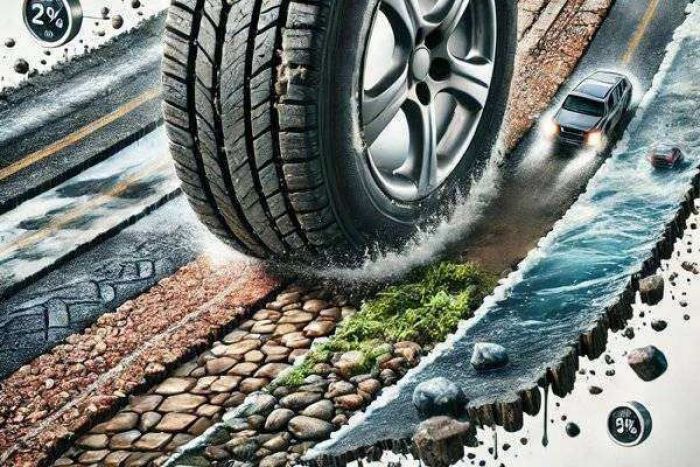Is your vehicle's exhaust pipe coated with black soot? Are you looking for a way to solve this unsightly problem? This article will detail how to clean your car's exhaust pipe and go a step further. We will also reveal the probable causes of the black soot, and how to prevent the problem from reoccurring.

What Causes the Black Soot? How Do I Avoid It?
Whenever carbon dioxide is released through your exhaust, some traces of the face fuse into an internal section of the pipe and coat it black. As the black residue builds up, your exhaust system's effectiveness dramatically reduces as the congestion slowly interrupts how gases exit. Not to mention it looks quite dirty and neglected.
If you think that's horrible, wait until you hear about how the high carbon dioxide levels will accelerate the rusting of your precious exhaust system. The combustion process that powers your engine creates water vapor as a by-product. The water vapor leaves your engine through the exhaust pipes. This is why it is normal to see water dripping out of a tailpipe.
The water vapor is generally harmless and will only rust your pipes if they have been compromised by carbon dioxide. When you switch off your engine especially if you often make short trips, the moisture that lingers in the exhaust pipe will accelerate rusting.
Are you wondering how to avoid the whole fiasco in the first place? Upgrade your exhaust system to pure stainless steel! Sure, your pocket will feel the dent, but it will certainly be worth it to avoid routinely cleaning the pipes of carbon buildup. If any carbon dares besmirch your gleaming stainless steel, no elbow grease is necessary. A quick rub down with a sponge and soapy water will do the trick.
Mechanical Problems that Cause Carbon Buildup in Exhaust System
Your exhaust system is made up of several parts that work in tandem to ensure that your vehicle does not emit harmful gases or loud noise into the atmosphere. The soot clogging your exhaust system is a sign that your engine is running too rich.
This problem could be caused by a lack of air or excessive fuel in the combustion chamber. A rich engine mixture could be caused by various mechanical defects most commonly faulty fuel injectors. After cleaning the black soot from your exhaust system, you will need to keep an eye out for these likely causes:
- Clogged air filters may cause an insufficient volume of air to reach the engine. This will cause black soot due to high amounts of fuel being burnt.
- Faulty oxygen sensors may cause your car's ECU to have the wrong fuel-to-air ratio, thus causing the incomplete combustion responsible for black soot.
- Damaged piston rings will allow engine oil into the combustion chamber and create plumes of black smoke.
- A defective mass airflow sensor also causes the ECU to have an imbalance fuel-to-air ratio that causes black soot due to excess oil being left over in the combustion chamber.
- Leaky fuel injectors may let more oil than necessary enter the combustion chamber. The excess fuel will undergo incomplete combustion and create black soot.
How to Clean Black Soot From Your Exhaust System
Proper maintenance of your exhaust system not only prevents your tailpipes from black soot but also protects the environment from air and noise pollution. If you need more motivation, how about the performance boost you can expect after ridding yourself of the eye sore? Let's get started.
Cleaning your exhaust system will mean getting up close and personal with your:
- Exhaust pipes
- Catalytic inverter
- Exhaust manifold
1) Cleaning Your Exhaust Pipes
The first step when reviving your exhaust pipes to their original state is cleaning them with soapy water and a clean cloth. The cloth is effective when cleaning the exhaust tip but you will need a hard bristled brush for the pipe's interior. Clean as deep into the pipe as the hard bristled brush allows, before proceeding to degreasing.
Read the instructions on your degreaser to ensure you use it effectively. Use a dry cloth to rub a degreaser on the carbon and rust deposits on your exhaust pipe's inner and outer surfaces. Let the degreaser soak into the pipe for the amount of time recommended on the packaging, then get to scrubbing. Rub the degreaser off by scrubbing the pipe with circular motions wherever possible.
Once all the degreaser is scrubbed off the exhaust pipe, you are now ready to apply some polish. Use a microfiber to rid your pipes to get rid of any moisture and dust. Next use steel wool to apply the polish on the inner and outer surfaces of the exhaust. Just as with the degreaser ensure you use the polish according to the manufacturer's instructions. Once the polish has sat for the recommended time buff it off the pipe using a microfiber cloth.
2) Cleaning Your Catalytic Converter
A failing catalytic converter may create problems beyond black soot. It may cost you a stiff fine should you fail an emissions test. It is crucial to clean your catalytic converter whenever it gets clogged. This ensures that the converter can efficiently remove dangerous chemicals from the smoke exiting your tailpipe.
Please note that cleaning the catalytic converter is much more complicated than the exhaust pipes. Most manufacturers advise against this process because you risk damaging the internal catalyst. An expensive mistake that will compel you to replace the entire system. If you chose to clean your catalytic converter despite the disclaimer, you should consider entrusting the complex task to a licensed and insured mechanic.
First, you will need to ensure your converter is to blame by following these steps:
- Use an ODB-II scanner to diagnose the problem. All you need to do is plug the scanner into the port (usually found under the steering wheel or dashboard) and turn on your car without igniting it. Once electricity is flowing the scanner will boot up and generate an error code after prompting you to enter details like the vehicle's VIN, make, and model.
- Write down the trouble code and check online, or in your vehicle's user manual whether the problem is related to the catalytic converter.
If the code confirms that the converted is blame, clean it as follows:
- Before attempting to clean the converter it is wise to have a mechanic inspect the problem. Some converters are so clogged that replacement is the only option.
- Begin your cleaning effort by ensuring that there aren't any loose parts in the converter. If the converter makes rattling sounds when you hit it with a tool, this is a sign that it requires professional diagnosis and repair.
- Where no loose parts are rattling around the converter, use a commercial converter cleaner to carry out the process.
- Most cleaners work when the gas tank has four gallons inside, but be sure to confirm the recommended amount on the packaging. Pour the required amount of cleaner into the gas tank and drive your car around until it almost runs out of gas.
- Refill the gas tank and check whether the engine light tied to the catalytic converter has switched off. If it is still on, you have to bite the bullet and consult a professional.
3) Clean the Manifold
Your exhaust manifold is where the excess gases from the engine cylinders gather before they are channeled out through the pipes. Like other elements in your exhaust, over time, the manifold gets covered by soot, grease, carbon, and rust buildup. This grime reduces the manifold's efficiency, therefore, lowering your vehicle's performance.
Follow this process to clean your exhaust manifold:
- Get gloves, a dust mask, and safety goggles
- Check the instruction on your car's user manual on how to remove the exhaust manifold. Depending on your car's make and model, it may have one or two manifolds.
- Do not attempt to remove the manifold unless your car's engine has been turned off for at least thirty minutes.
- After ensuring the engine is cool to touch, put on your protective gear and begin the typical process below.
- Check the hoses attached to the manifold and remove them.
- Next use WD40 to loosen the bolts that attach the heat shield to the manifold. Unbolt them and remove the manifold.
- Clean the manifold by soaking its interior with a lacquer thinner.
- Scrub the manifold's exterior using a wire brush and steel wool.
- Next wipe it with the lacquer and allow it to sit. Voila, your manifold is ready to reattach.
Conclusion
Removing black soot from our exhaust system is not rocket science. The pipes are quite easy to clean. When it comes to the catalytic converter and exhaust manifold you are best off letting a professional handle it.
After all, cleaning the soot is treating the symptom not treating the disease. The only way to prevent the problem from rearing its ugly head again is to get the cause diagnosed and repaired by a professional. A set of stainless steel pipes wouldn't hurt either.
About the authors
The CarAraC research team is composed of seasoned auto mechanics and automotive industry professionals, including individuals with advanced degrees and certifications in their field. Our team members boast prestigious credentials, reflecting their extensive knowledge and skills. These qualifications include: IMI: Institute of the Motor Industry, ASE-Certified Master Automobile Technicians; Coventry University, Graduate of MA in Automotive Journalism; Politecnico di Torino, Italy, MS Automotive Engineering; Ss. Cyril and Methodius University in Skopje, Mechanical University in Skopje; TOC Automotive College; DHA Suffa University, Department of Mechanical Engineering






Add comment